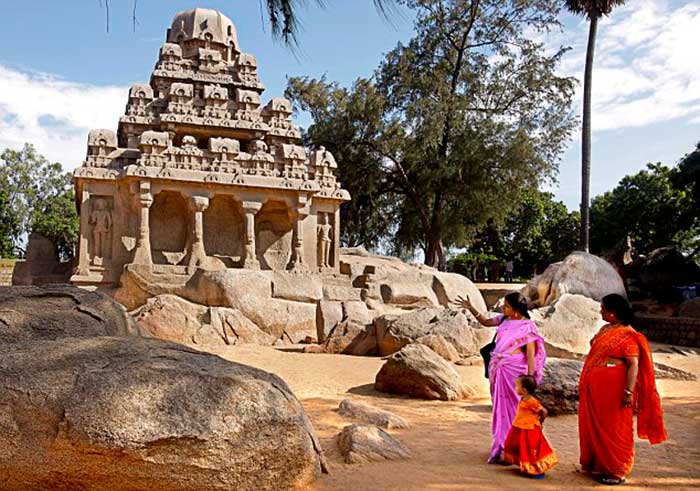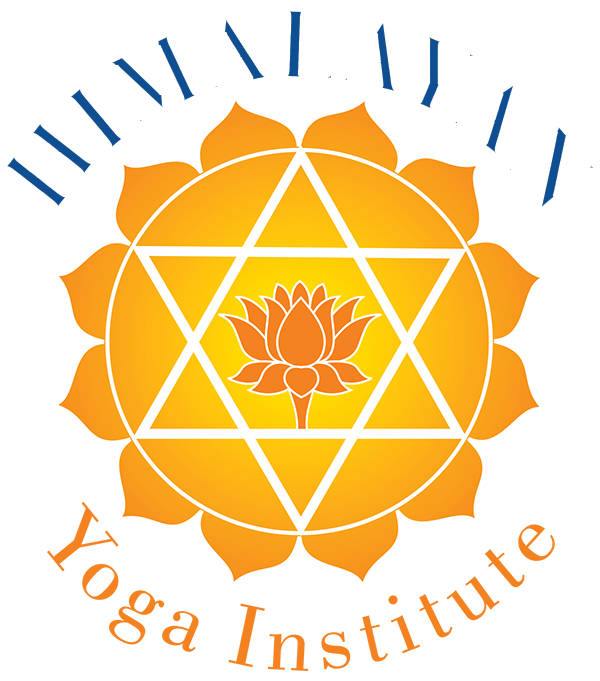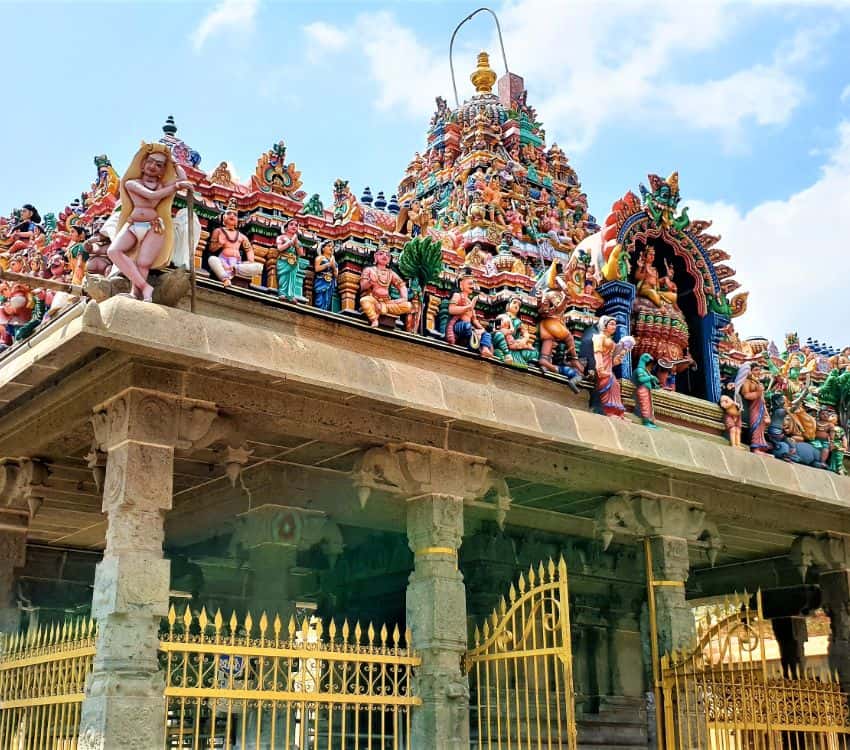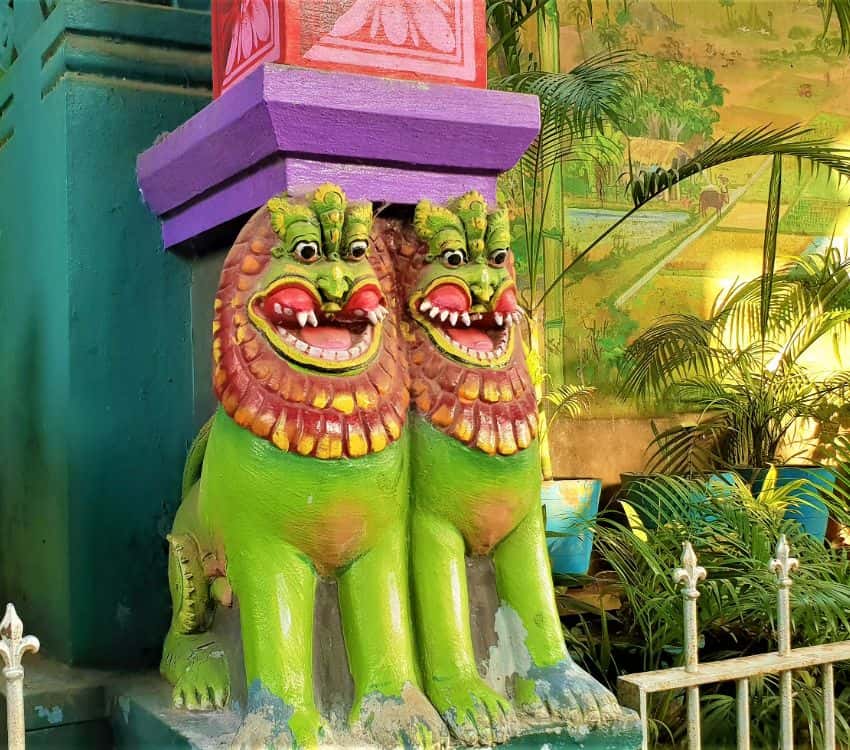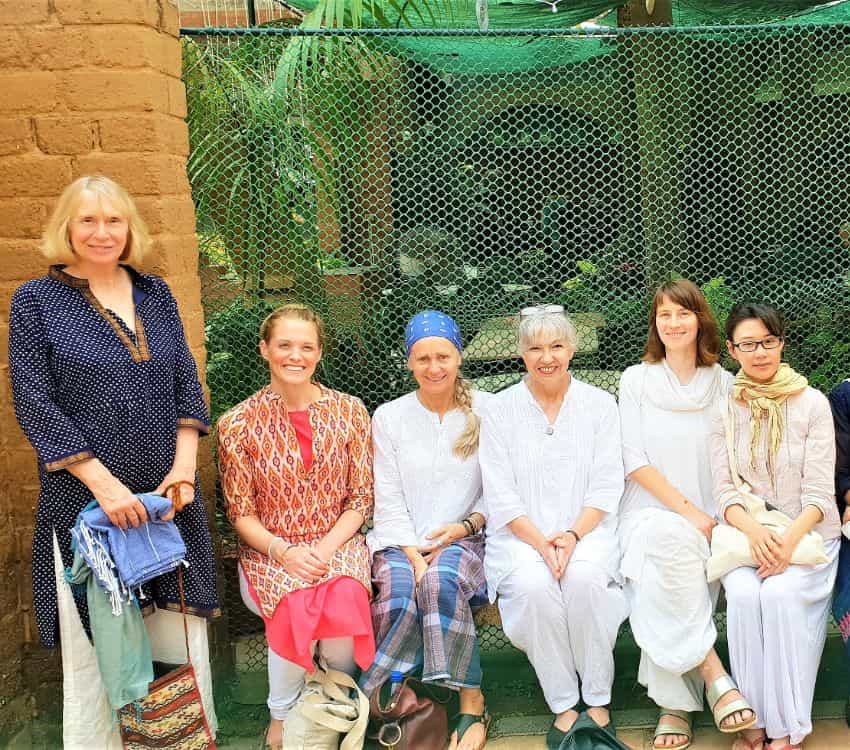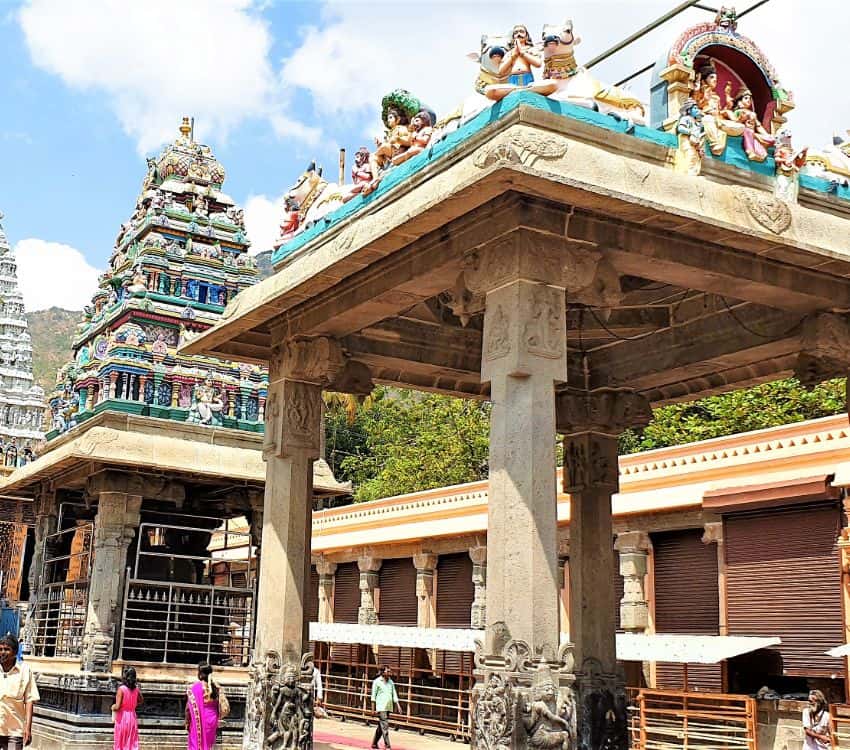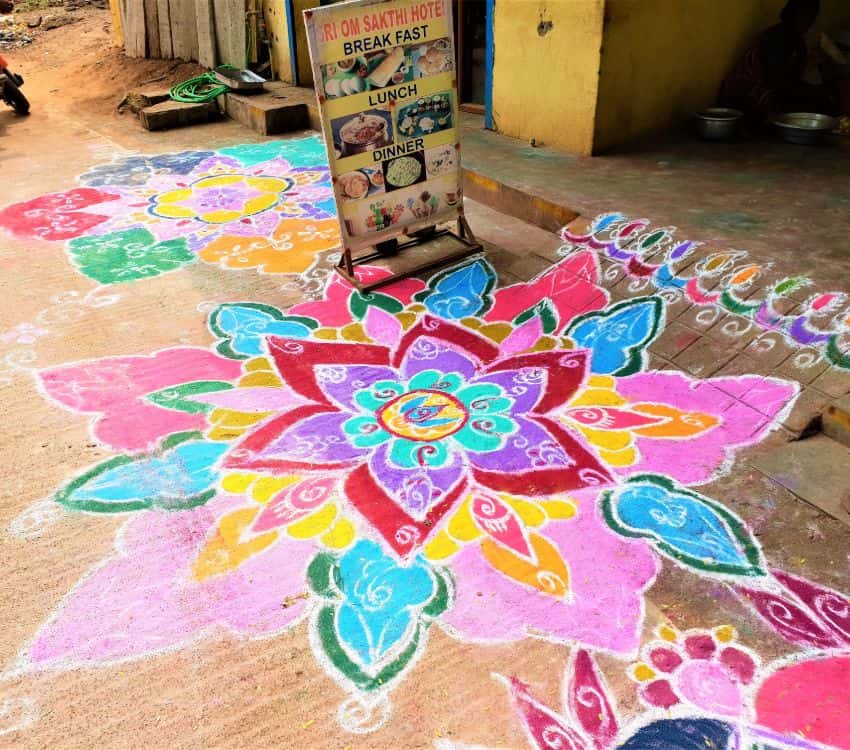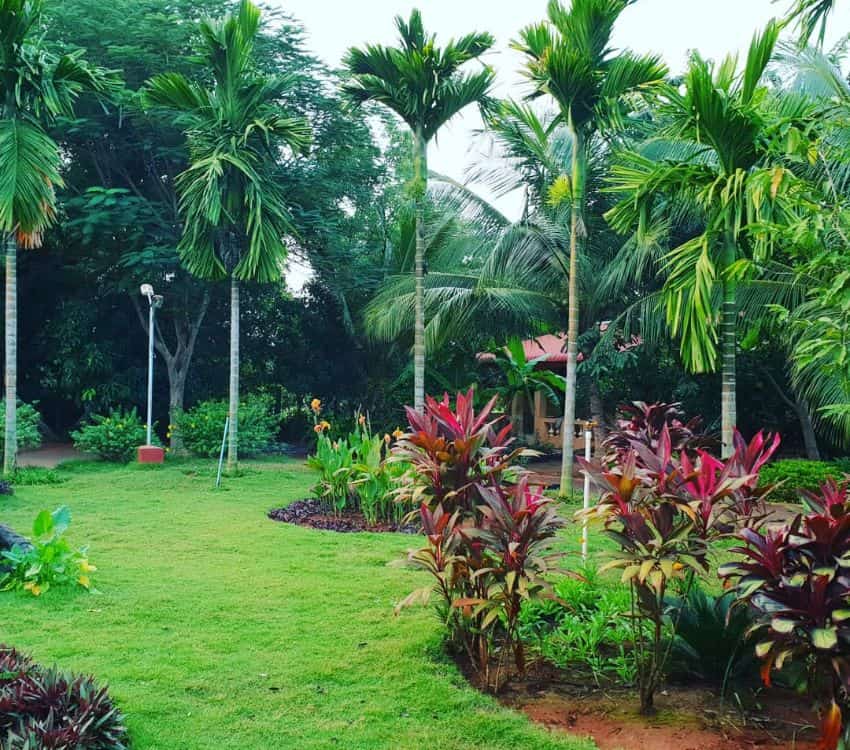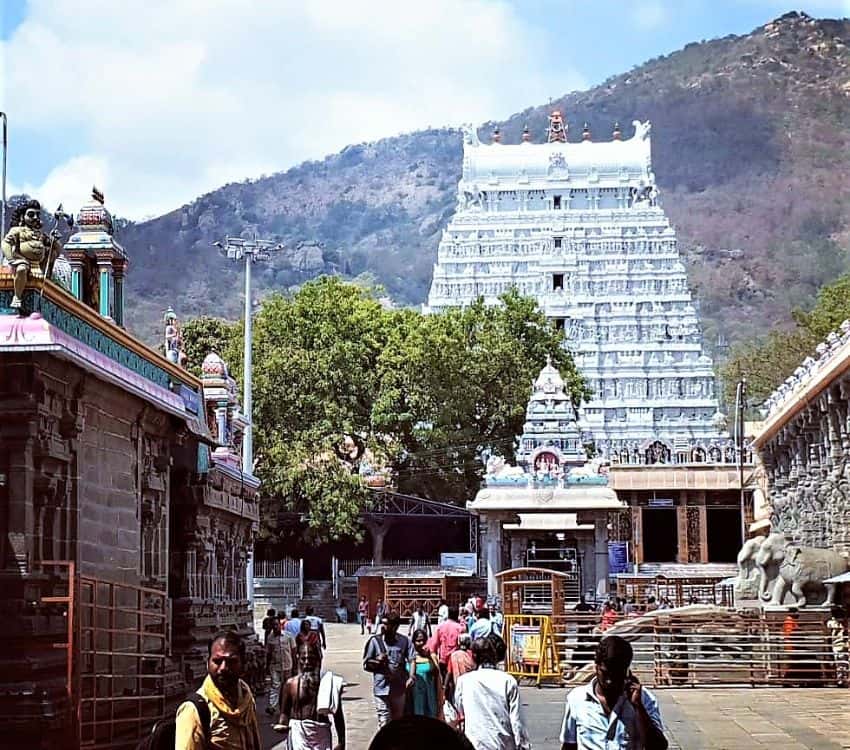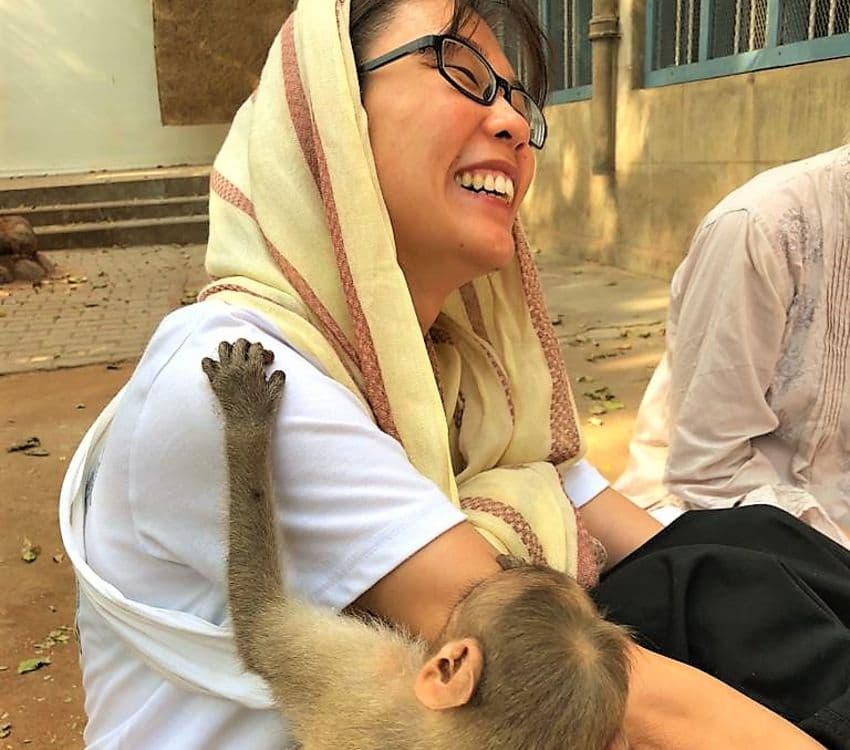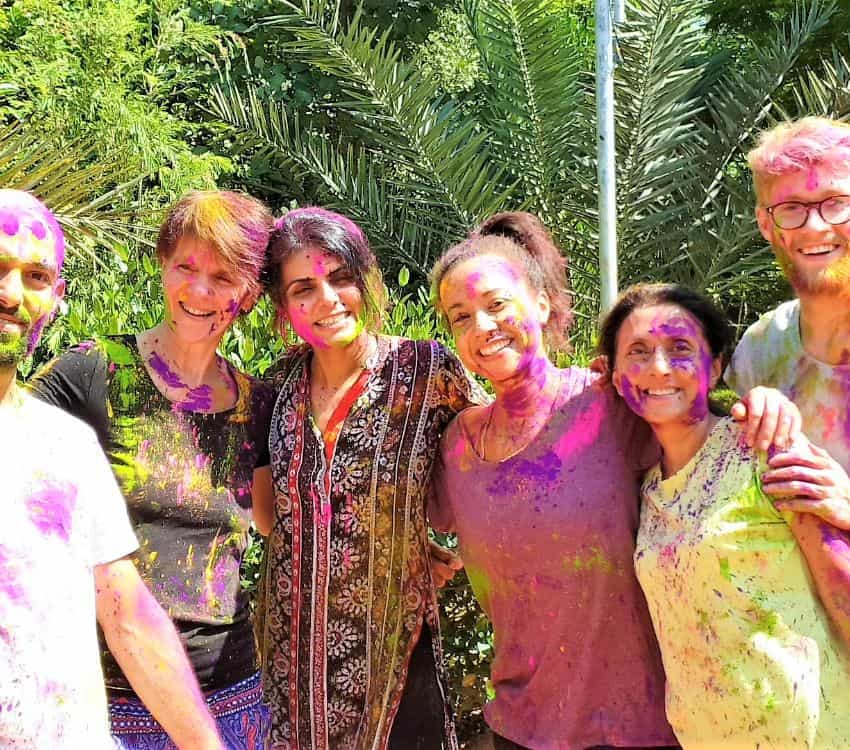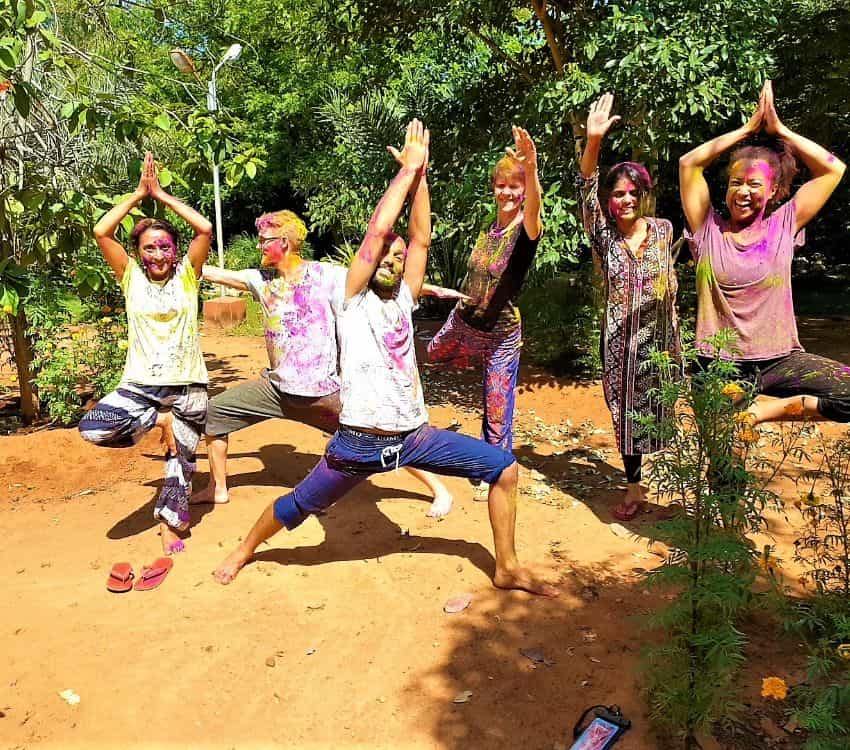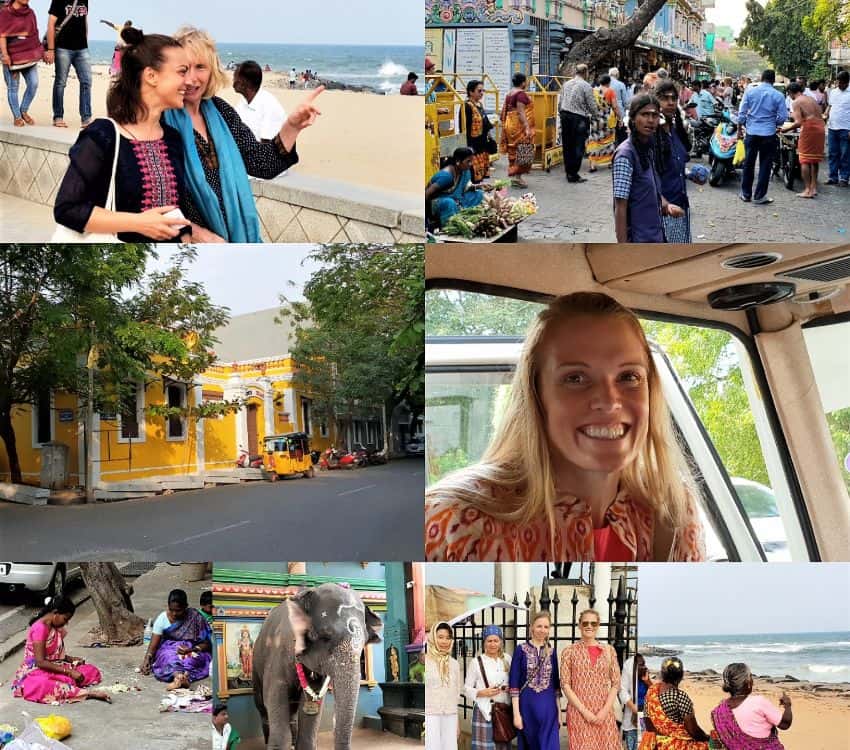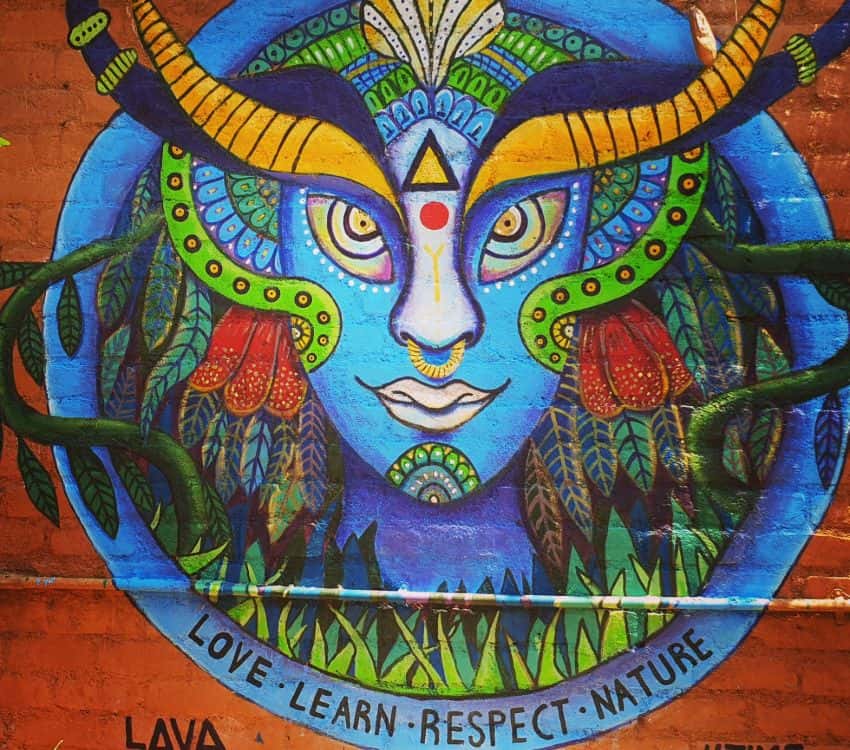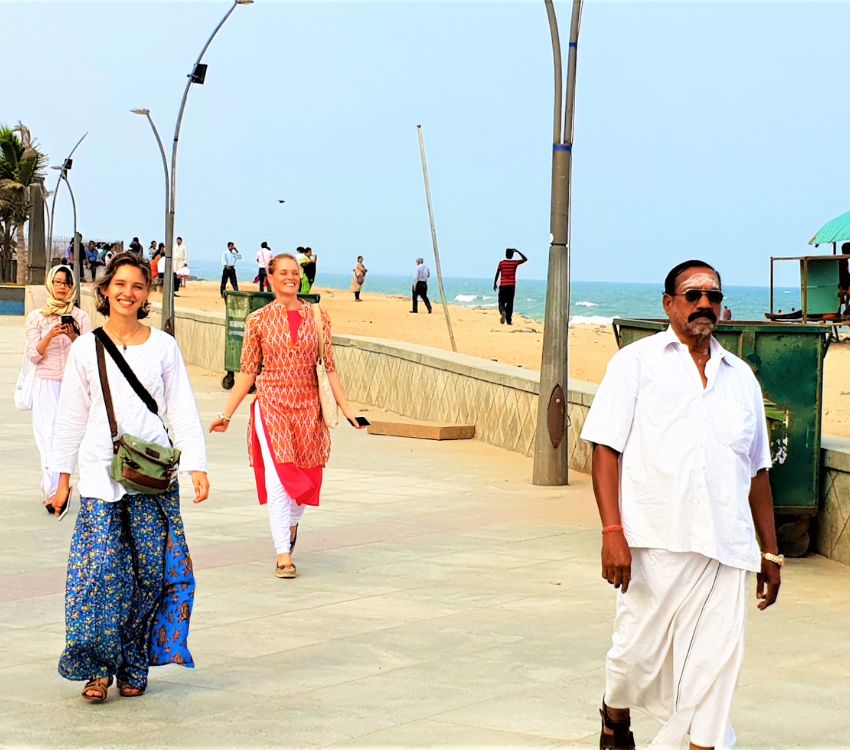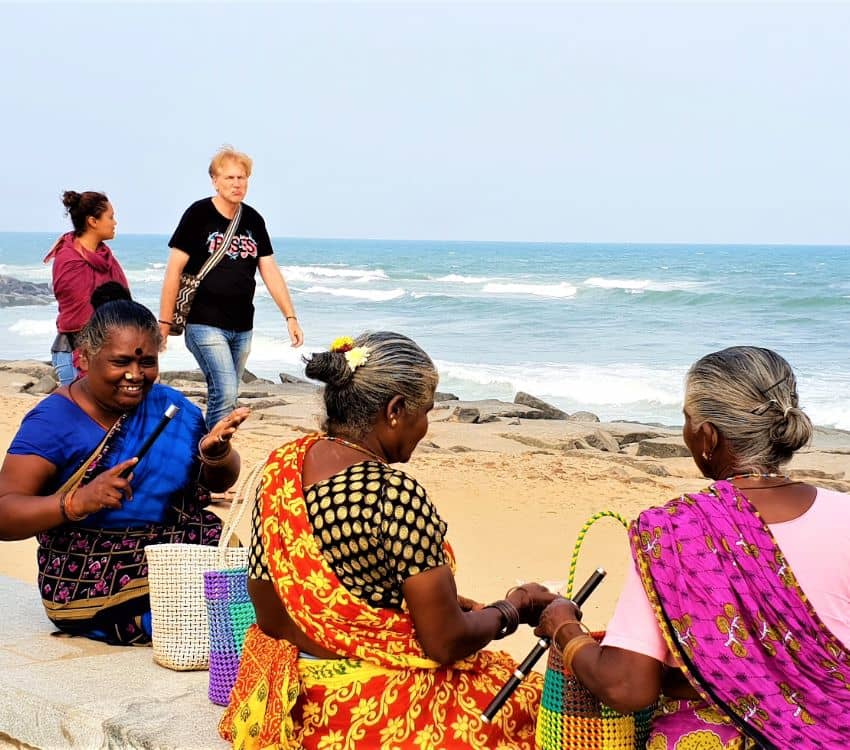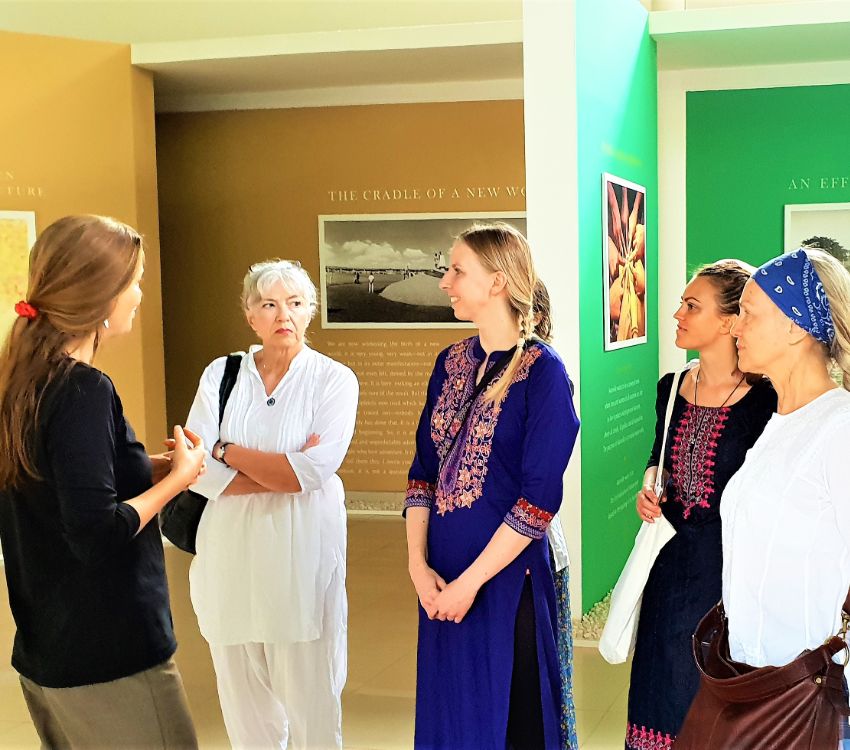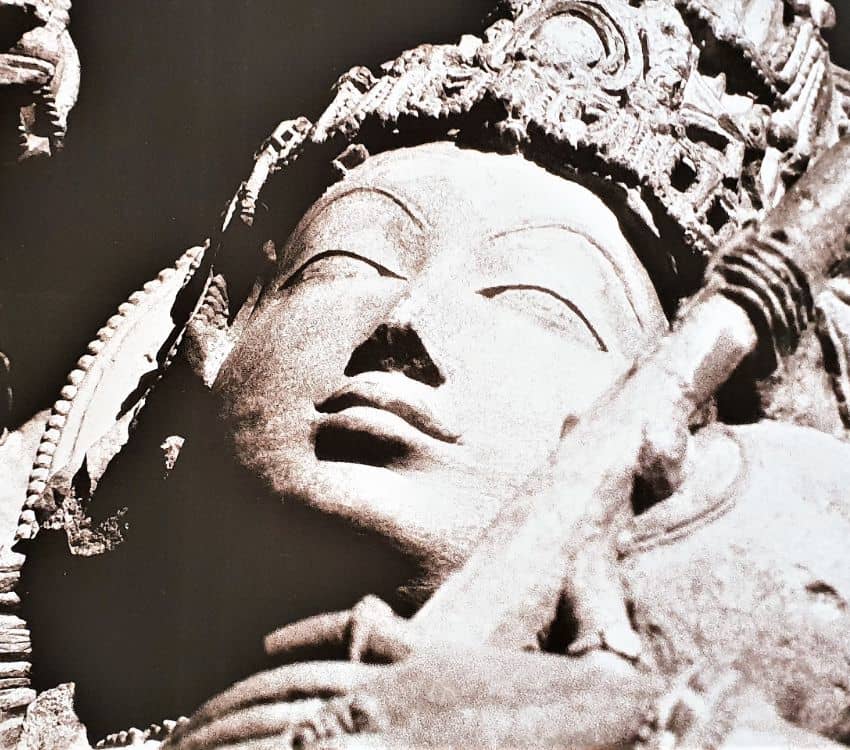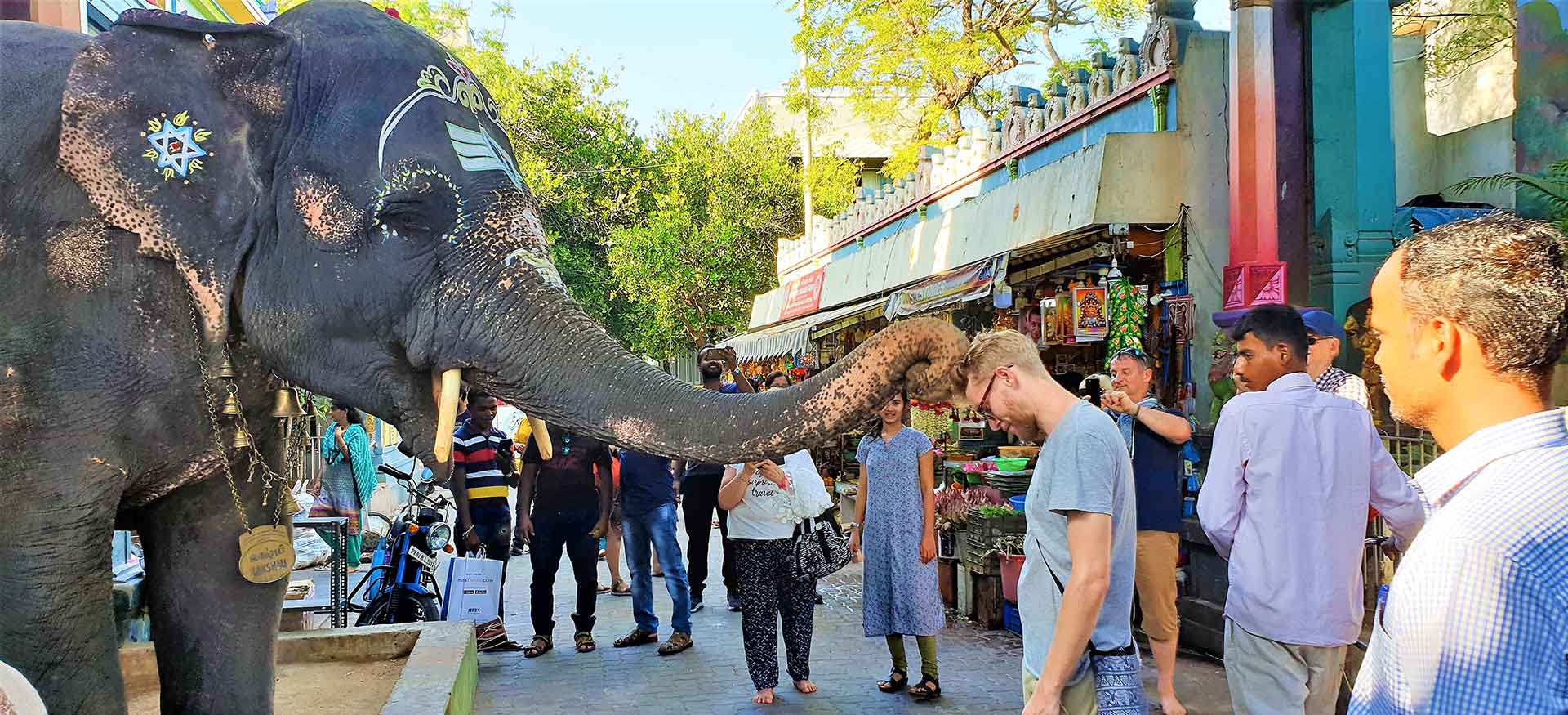
South India
The city of Pondicherry (Puducherry - 'New Village' in Tamil) is based on the French grid pattern and features perpendicular streets. The town is divided into two sections: the French Quarter (Ville Blanche or 'White town') and the Indian quarter (Ville Noire or 'Black Town').
French architectural styles are common, a reminder of the years that the territory formed part of French India. Many streets retain French names, and French-style villas are a common sight. In the French quarter, the buildings are typically colonial style with long compounds and stately walls. The Indian quarter consists of houses lined with verandas and with large doors and grilles. These French and Indian style houses are preserved as they are considered heritage buildings. The French language can still be heard in Puducherry.
Puducherry has a large number of Indian and a small number of non-Indian descent residents with French passports. These are descendants of those who chose to remain French when the French establishment presented the residents with an option to either remain French or become Indian at the time of Puducherry's transfer to India in 1954.
Among the French cultural organisations, the French Institute of Pondicherry, the Puducherry Centre of the École française d'Extrême-Orient and a branch of the Alliance Française are noteworthy. A French-medium school system, the Lycée Français de Pondichéry continues to operate under the aegis of the French Minister of National Education.
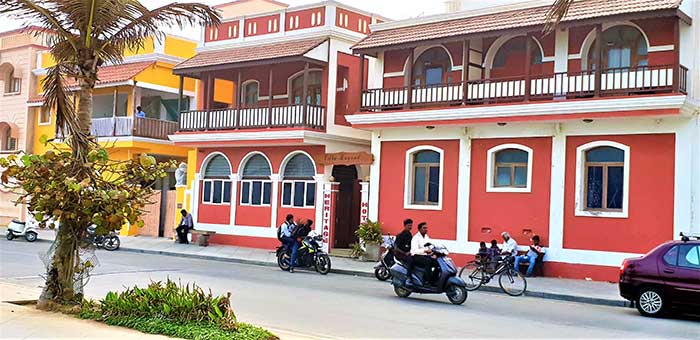
 Climate
Climate
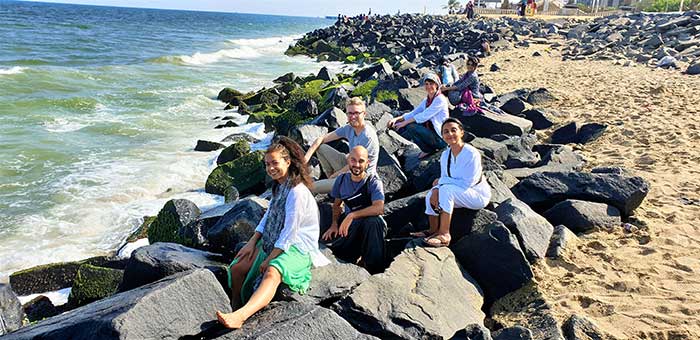
Pondicherry has a wet and dry, tropical climate. Summer lasts from April to early June with maximum temperatures of 41°C. The average maximum temperature is 36°C and the minimum 28–32°C. Period of high humidity and occasional thundershowers lasts from June till September. Humidity during this period might range up to 93%. Rain season lasts from October to December due to monsoon. Winters are warm with temperature around 18-30°C.
 Tourism
Tourism
The city has many colonial building, churches and temples that still preserve much of the colonial ambiance. The Sri Aurobindo Ashram is one of the most important ashrams in India. It was the residence of Indian freedom fighter Sri Aurobindo and today is one of the prime destinations for tourists and spiritual seekers.
Sri Manakula Vinayagar Temple is dedicated to Lord Ganesha and consists of 16 forms of the Lord called Bhuvaneshar Ganapathy or Manakula Vinayagar. Kokilambal Thirukameshwara Temple is dedicated to Lord Shiva. Apart from the beautiful pillars and two majestic towers, this temple is significant for its annual temple car festival. Also, in this temple women pray to Prasava Nandi before their pregnancy delivery.
There are a number of old churches, heritage buildings and monuments in Pondicherry like Gandhi statue, Nehru statue, Bharathi Park, and French War Memorial. With Mahe Beach, Paradise Beach, and Auroville and Serenity Beach nearby, Pondicherry is perfect for all those who want to enjoy solitude, sun and sand.
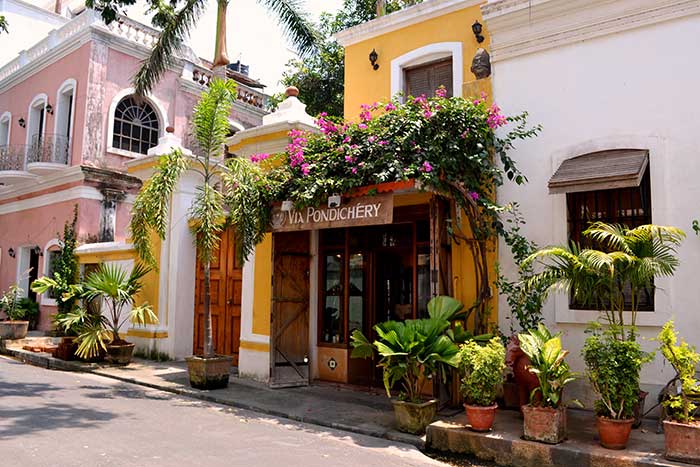
 Pondicherry (Puducherry)
Pondicherry (Puducherry)
The little town of Pondicherry (or Puducherry in Tamil) is different from any other town in India you may have seen. Its charm is bewitching and it provides a unique fusion of Indian and French architecture. The town was under French colonial rule and this has left an undeniable mark on the city’s architecture and lifestyle.
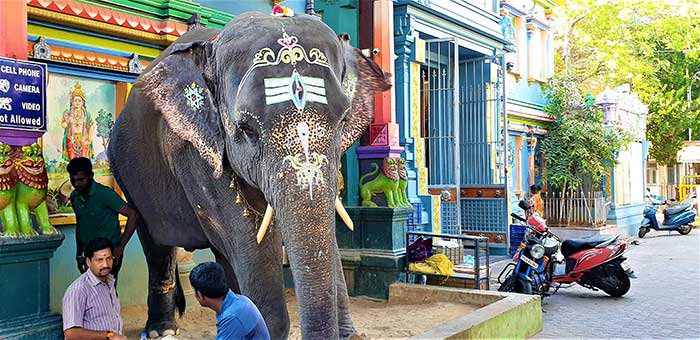
 Auroville
Auroville
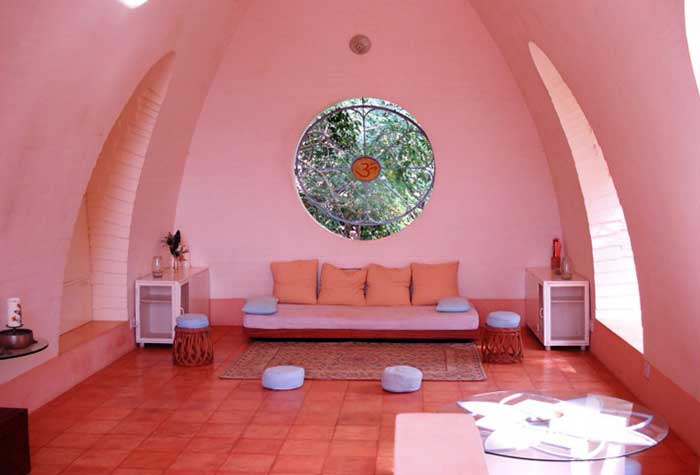
Auroville is a model community in South India in the state of Tamil Nadu and partly in the state of Puducherry, a few kilometres inland from the Coromandel Coast, approx 160 kms south of Chennai (previously Madras) and 10 km north of the town of Puducherry (AKA Pondicherry). It’s the international “city for human unity”, founded in 1968, based on the principles of Mother and Sri Aurobindo’s Integral Yoga.
The purpose of Auroville is to realise human unity – in diversity. Today Auroville is recognised as the first and only internationally endorsed ongoing experiment in human unity and transformation of consciousness, also concerned with - and practically researching into - sustainable living and the future cultural, environmental, social and spiritual needs of mankind.
 The charter of Auroville:
The charter of Auroville:
"Auroville wants to be a universal town where men and women of all countries are able to live in peace and progressive harmony above all creeds, all politics and all nationalities. The purpose of Auroville is to realise human unity."
“Auroville will be the place of an unending education, of constant progress and a youth that never ages.”
The residents of Auroville come from some 45 nations, from all age groups (from infancy to over eighty, averaging around 30), from all social classes, backgrounds and cultures, representing humanity as a whole. The population of the township is constantly growing, but currently stands at around 2,160 people, of whom approx. one-third are Indian.
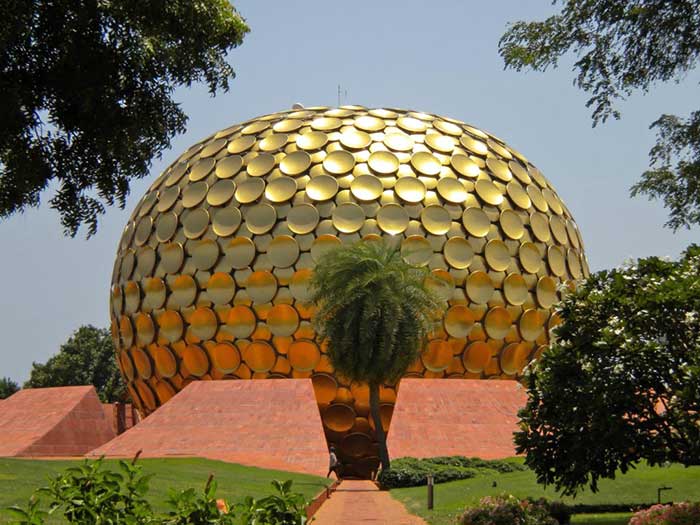
 Peace Area
Peace Area
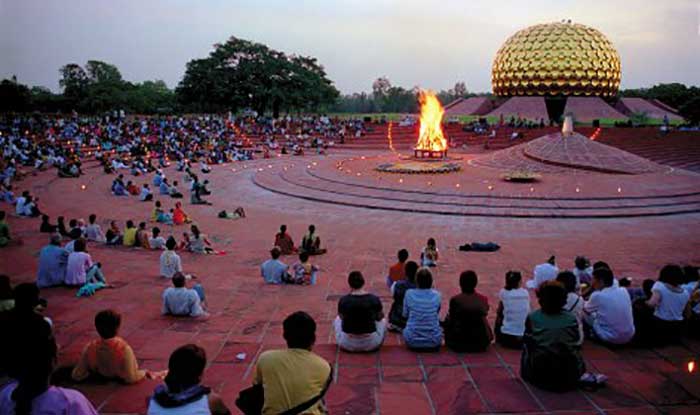
At the centre of the township lies the Peace Area, comprising the Matrimandir and its gardens, the amphitheatre with the Urn of Human Unity that contains the soil of 121 nations and 23 Indian states, and a lake to help create an atmosphere of calm and serenity and to serve as a groundwater recharge area.
 Mamallapuram (Mahabalipuram)
Mamallapuram (Mahabalipuram)
Mamallapuram (also called Mahabalipuram) is the UNESCO world heritage site, displaying gorgeous stone carvings and temple structures of great beauty.
Mahabalipuram is an ancient historic town and was a bustling seaport during the time of Periplus (1st century CE) and Ptolemy (140 CE). Ancient Indian traders who went to countries of South East Asia sailed from the seaport of Mahabalipuram.
Mahabalipuram is an ancient historic town and was a bustling seaport during the time of Periplus (1st century CE) and Ptolemy (140 CE). Ancient Indian traders who went to countries of South East Asia sailed from the seaport of Mahabalipuram.
By the 7th century it was a port city of the South Indian dynasty of the Pallavas. It has a group of sanctuaries, which was carved out of rock along the Coromandel coast in the 7th and 8th centuries: Rathas (temples in the form of chariots), Mandapas (cave sanctuaries), giant open-air reliefs such as the famous 'Descent of the Ganges', and the Shore temple, with thousands of sculptures dedicated to Shiva.
